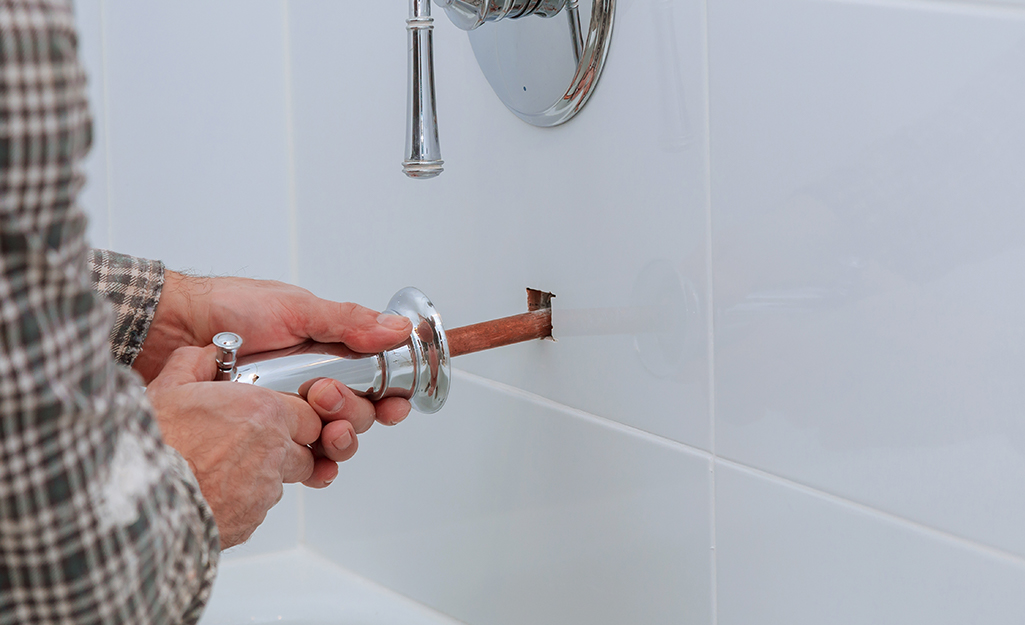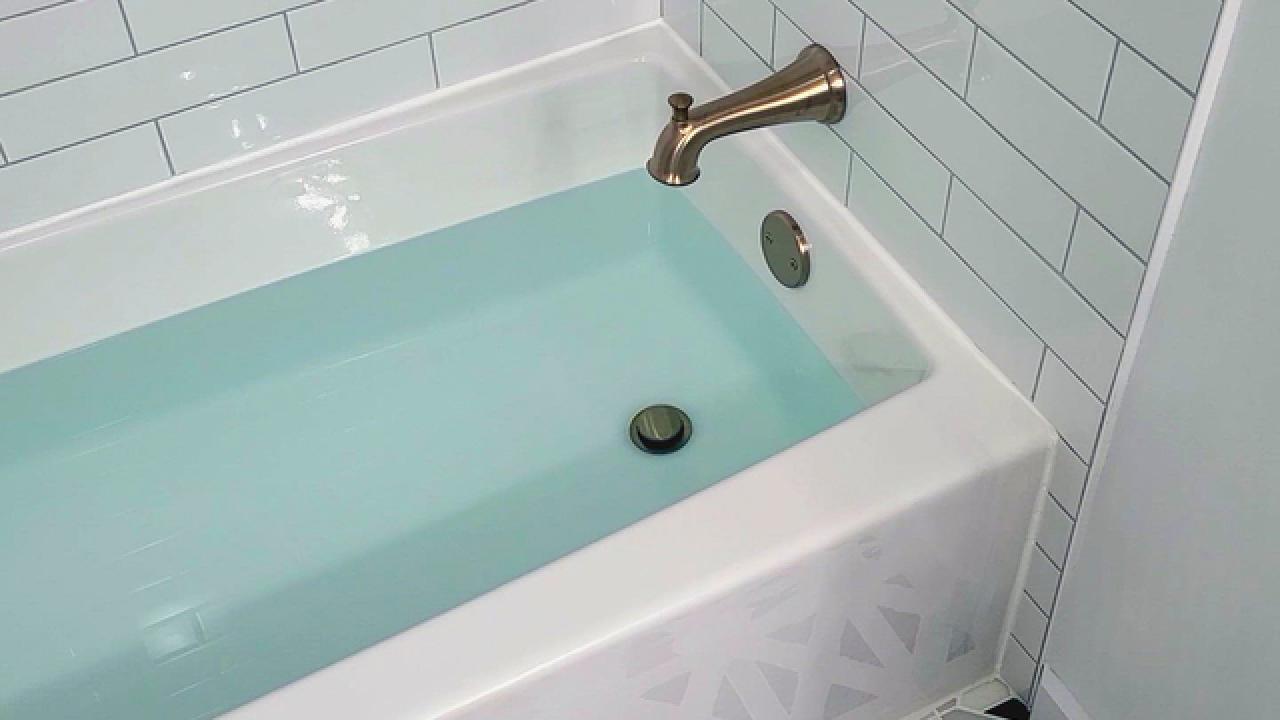In this article in the next paragraph you can discover more reliable answers related to How to Install a Bathtub: Install an Acrylic Tub and Tub Surround.

Mounting a bathtub isn't precisely brain surgery, yet it does require solid plumbing, woodworking, and also occasionally, tiling skills. Replacing an old tub with a brand-new one is likewise a reasonably tough task. If the old tub is readily available, the job can relocate easily; if you need to open up a wall to remove the old tub and also position the new bathtub, the task is much harder. In either situation, the job is within a house handyman's skills, although you will need a helper to leave the old tub as well as set in the new one. Make sure you have qualified yourself for the job and are comfortable attempting it. Instead of employing a specialist to take over a halfway-completed job, it is much better to think about utilizing one before you begin. Opportunities are you might require a specialist plumber to make tube connections.
This short article will help you set up a brand-new tub in your restroom if you have already bought a brand-new bathtub and also do not need to alter the arrangement of your previous water supply pipes.
Your devices and also product list must make up the following:
Removing Old Touches
If you require to replace old taps with new ones as a part of your installment, after that the first thing you ought to do is disconnect the water supply. After doing so, activate the faucets to drain any water remaining in the system. The procedure of eliminating the existing taps can be fairly problematic as a result of the limited access that is often the case.
Make use of a container wrench (crowsfoot spanner) or a tap device to undo the nut that connects the supply pipelines to the faucets. Have a cloth all set for the staying water that will originate from the pipelines. Once the supply pipelines have actually been removed, make use of the very same tool to loosen up the nut that holds the faucets onto the bath/basin. You will require to stop the single faucets from turning throughout this process. When the faucets have been removed, the holes in the bath/basin will certainly have to be cleansed of any type of old sealing substance.
Before going on to fit the new faucets, compare the pipeline connections on the old faucets to the brand-new taps. If the old faucets are longer than the new faucets, then a shank adapter is needed for the new faucets to fit.
Fitting New Touches
If the tails of the new faucets are plastic, then you will need a plastic adapter to avoid damages to the thread. One end of the adapter fits on the plastic tail of the tap and also the other end gives a connection to the current supply pipes.
If you require to fit a monobloc, then you will certainly require lowering couplers, which connects the 10mm pipeline of the monobloc to the basic 15mm supply pipeline.
Next, place the faucet in the installing opening in the bath/basin making certain that the washers remain in place between the tap and also the sink. Secure the faucet in place with the producer supplied backnut. Once the tap is firmly in position, the supply pipes can be linked to the tails of the faucets. The taps can either be linked by utilizing corrugated copper piping or with normal faucet adapters. The former kind needs to be attached to the faucet ends initially, tightening up only by hand. The supply pipes can later on be linked to the various other end. Tighten both ends with a spanner after both ends have actually been attached.
Installing the Tub
Making use of both wooden boards under its feet, place the tub in the needed placement. The wood boards are useful in uniformly spreading out the weight of the bathtub over the area of the boards instead of focusing all the weight onto 4 tiny factors.
The next goal is to make sure that the tub is leveled all round. This can be accomplished by examining the spirit level and also adjusting the feet on the bathtub up until the spirit level checks out degree.
To mount faucets, fit the bottom of the furthest versatile faucet port to the ideal supply pipeline by making a compression join; then do the exact same for the other faucet.
Switch on the supply of water as well as inspect all joints and also brand-new pipework for leakages as well as tighten them if necessary. Fill the bathtub and also inspect the overflow outlet as well as the typical electrical outlet for leakages.
Lastly, take care of the bathroom paneling as defined in the manufacturer's user's manual. Tiling as well as securing around the tub should wait until the bathtub has been used at least once as this will settle it into its final position.
Planning for the Installment
To start with, the sustaining framework supplied with the bath ought to be fitted (if required) according to the producer's instructions. Next, fit the faucets or mixer to the bath tub. When suitable the faucet block, it is very important to see to it that if the faucet includes a plastic washer, it is fitted in between the bath as well as the faucets. On a plastic bath, it is also sensible to fit a supporting plate under the taps system to avoid stress on the tub.
Fit the versatile tap ports to the bottom of both faucets making use of 2 nuts and also olives (occasionally provided with the bathtub). Fit the plug-hole electrical outlet by smearing mastic filler round the sink electrical outlet opening, and afterwards pass the electrical outlet through the hole in the bath. Use the nut provided by the supplier to fit the plug-hole. Check out the plug-hole outlet for an inlet on the side for the overflow pipe.
Next, fit completion of the adaptable overflow pipeline to the overflow outlet. After that, screw the pipe to the overflow face which need to be fitted inside the bathroom. Ensure you use every one of the provided washing machines.
Connect the trap to the bottom of the waste electrical outlet on the bath tub by winding the thread of the waste outlet with silicone mastic or PTFE tape, and screw on the catch to the electrical outlet. Connect the bottom of the overflow tube in a similar manner.The bath need to currently be ready to be fitted in its last setting.
Tiling Around the Bathtub
In the location where the bathroom meets the tile, it is essential to seal the accompanies a silicone rubber caulking. This is very important as the fitting can relocate sufficient to break a rigid seal, creating the water to permeate the wall in between the bathroom and also the tiling, causing problems with dampness and also possible leaks to the ceiling below.
You can select from a variety of coloured sealers to blend in your components as well as installations. They are offered in tubes and cartridges, and also are capable of securing spaces up to a size of 3mm (1/8 inch). If you have a larger void to fill up, you can load it with twists of drenched paper or soft rope. Remember to constantly fill the tub with water before securing, to allow for the activity experienced when the tub remains in usage. The sealant can fracture relatively very early if you do not take into consideration this movement prior to sealing.
Additionally, ceramic coving or quadrant floor tiles can be utilized to border the bath or shower tray. Plastic strips of coving, which are easy to use and also cut to dimension, are likewise easily offered on the marketplace. It is recommended to fit the floor tiles utilizing waterproof or waterproof sticky and also grout.
Bathtub Installation
How Important Is A Bathtub To Your Home?
High-quality baths, showers, and other bathroom updates are necessary when considering a smart investment in your home. It’s a room that you go to every day and one that is constantly being used by guests.The bathroom is one of the top trafficked rooms in a home and also one of the most valuable in terms of home resale.
Install Piping Before Tub
You will be using your existing drain and waste vent system, but pipes required include the hot and cold water supply lines and a pipe leading to a shower head. A mixing valve and shower head are also needed. Air chambers may be required.
Position the Tub
Lower the tub into place so that the continuous flange fits against the wall studs and rests on 1’x4' or 2’x4' supports. Anchor the tub to the enclosure with nails or screws inserted through the flanges into the studs.
NOTE: Remember, bathtubs and shower stalls may require support framing. A bathtub filled with water is extremely heavy, so check building codes and framing support before installing the tub.
Assemble Drain Connections
Assemble the bathtub drain connections by connecting the tub overflow with the tub drain above the trap, not beyond it. The trap will have a compression fitting that screws over the arm of the overflow assembly.
Place a Pipe For the Shower Head
First, locate a brass female threaded winged fitting and attach it to a framing support via a screw or a nail. Then run a pipe up the wall for the shower head. Sweat or solder the other side of the brass fitting to the top of the pipe.
Attaching Hot and Cold Water Lines
Attach your water lines for both hot and cold by sweating these directly into the hot and cold ports of the mixing valve. The mixing valve will be how water enters the tub’s system, not by the pipes themselves.
Install the Spout
Extend a piece of 1/2 inch pipe, or whichever length is specified in the manufacturer’s instructions, for the tub spout. Sweat on a male threaded fitting at the end of the pipe or use a brass nipple of the proper length and a 1/2 inch cap.
NOTE: At this point you should have your rough-in plumbing work inspected before proceeding further.
Check For Leaks
Restore the water pressure and check the drain connection and the supply pipes for any sign of leaking.
estore the Bathroom Wall
Replace the wall with moisture-resistant drywall as a base for your wall covering. Seal the joints between the wall and your new tub with silicone caulk as protection against water seepage.
https://www.berkeys.com/2016/12/02/bathtub-installation-dallas/

Do you enjoy more info about How to Install a Bathtub? Try to leave a remark below. We will be interested to know your views about this article. We are looking forward to see you back again later on. Those who appreciated our post plz make sure you remember to pass it around. Thanks so much for your time spent reading it.
View More